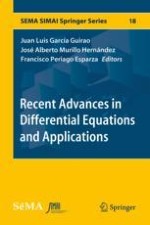This work gathers a selection of outstanding papers presented at the 25th Conference on Differential Equations and Applications / 15th Conference on Applied Mathematics, held in Cartagena, Spain, in June 2017. It supports further research into both ordinary and partial differential equations, numerical analysis, dynamical systems, control and optimization, trending topics in numerical linear algebra, and the applications of mathematics to industry. The book includes 14 peer-reviewed contributions and mainly addresses researchers interested in the applications of mathematics, especially in science and engineering. It will also greatly benefit PhD students in applied mathematics, engineering and physics.
